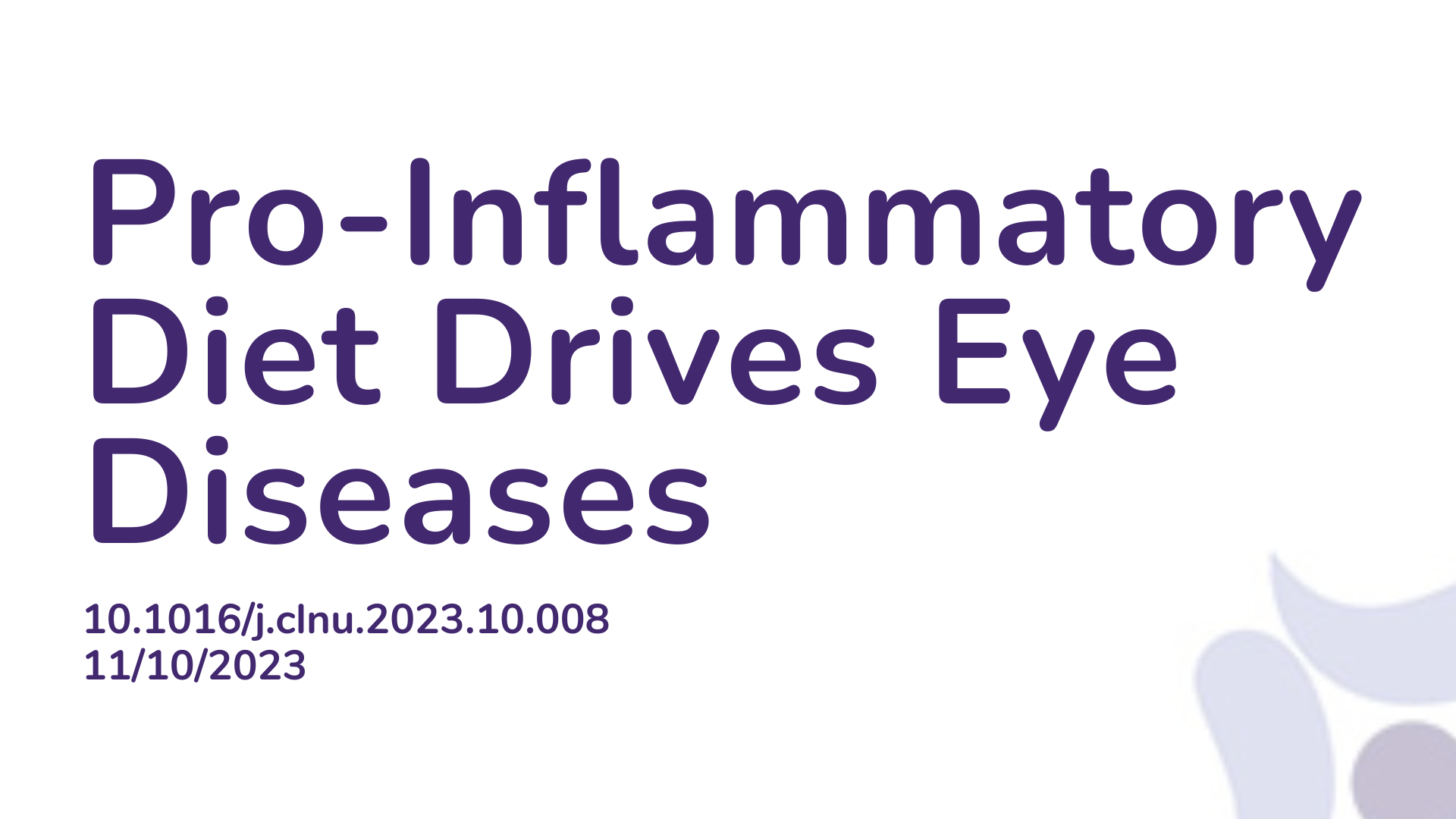Summary:
Inflammation plays a crucial role in the development of various chronic non-communicable diseases, including several eye conditions such as cataract, age-related macular degeneration (AMD), and open-angle glaucoma (OAG), which are leading causes of global blindness. Recognizing the impact of chronic inflammation on degenerative diseases has prompted research into the influence of nutrition on inflammation. The Mediterranean diet, rich in fruits, vegetables, legumes, and grains, exhibits anti-inflammatory effects compared to diets in North America and Northern Europe. This study aims to investigate the association between inflammatory food intake and the incidence of cataracts, AMD and OAG. The results showed that a pro-inflammatory diet was linked to increased risks of cataract and AMD. These findings are pertinent for individuals with AMD and underscore the importance of adhering to healthy lifestyle recommendations to prevent vision impairment.
Abstract:
Background & aims: Inflammation is involved in the pathogenesis of cataract, age-related macular degeneration (AMD), and possibly open-angle glaucoma (OAG). We assessed whether the inflammatory potential of diet (quantified using the dietary inflammatory index; DII) affects the incidence of these common blinding age-related eye diseases. Serum inflammation markers were investigated as possible mediators. Methods: Participants aged >45 years were selected from the prospective, population-based Rotterdam Study. From 1991 onwards, every 4–5 years, participants underwent extensive eye examinations. At baseline, blood samples and dietary data (using food frequency questionnaires) were collected. The DII was adapted based on the data available. Of the 7436 participants free of eye diseases at baseline, 4036 developed incident eye diseases during follow-up (cataract = 2895, early-intermediate AMD = 891, late AMD = 81, OAG = 169). Results: The adapted DII (aDII) ranged from −4.26 (i.e., anti-inflammatory) to 4.53 (i.e., pro-inflammatory). A higher aDII was significantly associated with increased inflammation. A higher neutrophil-lymphocyte ratio (NLR) was associated with an increased risk of cataract and AMD. Additionally, complement component 3c (C3c) and systemic immune-inflammation index (SII) were associated with increased risks of cataract and late AMD, respectively. Every point increase in the aDII was associated with a 9% increased risk of cataract (Odds ratio [95% confidence interval]: 1.09 [1.04–1.14]). The NLR and C3c partly mediated this association. We also identified associations of the aDII with risk of AMD (early-intermediate AMD, OR [95% CI]: 1.11 [1.03–1.19]; late AMD, OR [95% CI]: 1.24 [1.02–1.53]). The NLR partly mediated these associations. The aDII was not associated with OAG. Conclusions: A pro-inflammatory diet was associated with increased risks of cataract and AMD. Particularly the NLR, a marker of subclinical inflammation, appears to be implicated. These findings are relevant for patients with AMD and substantiate the current recommendations to strive for a healthy lifestyle to prevent blindness.
Article Publication Date: 11/10/2023
DOI: 10.1016/j.clnu.2023.10.008



